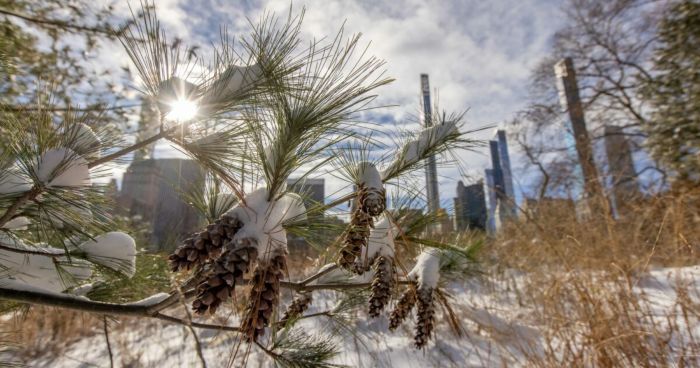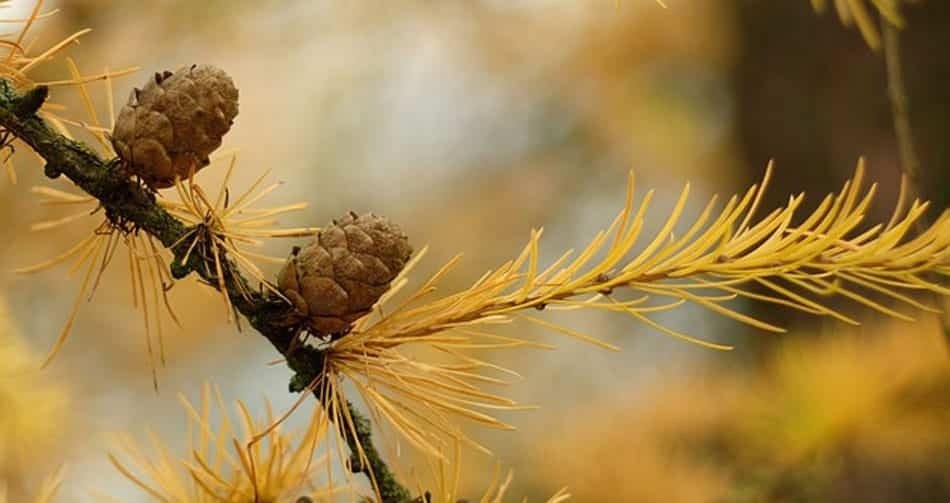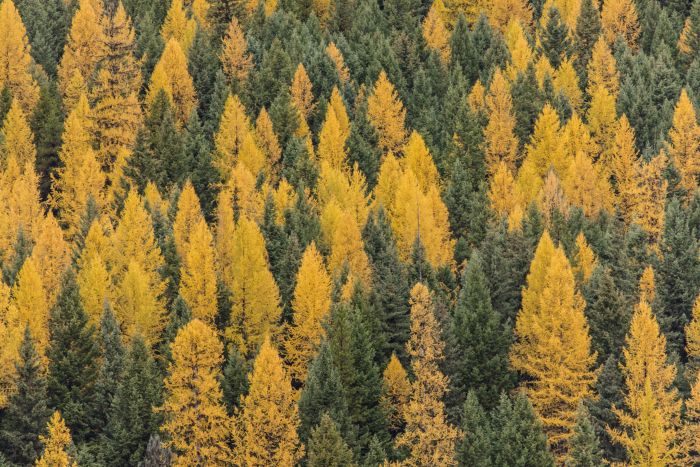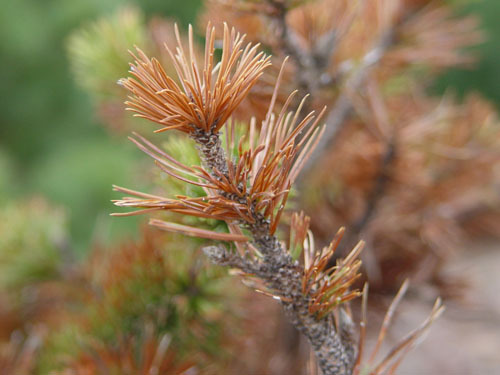Winter can be a challenging season for trees, especially pines and other conifers. Understanding how these trees respond to the cold and what they need in winter helps to keep them surviving and thriving. In this blog, we’ll touch on some fascinating facts about pine trees and conifers, along with tips on tree health care to prep them for winter.

Which “Pine” Trees Lose Their Needles in Winter?
Many people think of trees as coniferous vs deciduous trees, and most coniferous trees are evergreen. So, it’s understandable that the sight of conifers and pine-like trees shedding needles often raises an alarm. However, not all conifers and pine-like trees are evergreen.
Some “pine-like” trees, such as larches (Larix spp.), are deciduous conifers that shed their needles each fall. Although often mistaken for evergreen pines, these trees exhibit beautiful golden foliage before losing their needles entirely. Other trees that may be confusing are the bald cypress (Taxodium distichum) and the dawn redwood (Metasequoia glyptostroboides), which also lose their needles in winter but are not true pines.

What Conifer Trees Lose Their Needles in Winter?
Deciduous conifers like larches, bald cypresses, and dawn redwoods are unique among conifer species. These trees evolved to shed their needles in preparation for winter, conserving energy and protecting themselves from harsh cold. Their needle loss is a natural part of their lifecycle and should not be mistaken for disease or damage.
When Do Deciduous Conifer Needles Stop Falling?
The timing of needle drop in deciduous conifers depends on the tree species and local climate. Typically, needle drop begins in late autumn and concludes before the first frost. In warmer climates, the process may extend into early winter. After the needles fall, these trees remain bare until new growth emerges in the spring.
What Pine Trees Don’t Shed Needles?
Unlike deciduous conifers, true pine trees (Pinus spp.) are evergreen, meaning they retain their needles year-round. However, all evergreen trees still experience some natural needle shedding. Older needles, usually located closer to the trunk, turn yellow and drop during the fall to make room for new growth. If entire evergreen trees are turning brown, there may be some underlying health issue or pest. But when healthy, evergreens maintain their vibrant green foliage throughout winter. Examples include the eastern white pine (Pinus strobus), ponderosa pine (Pinus ponderosa), and Scots pine (Pinus sylvestris).

Pine Trees Winter Care Checklist
Proper care during winter can help your pine trees stay healthy and survive the cold months. Follow this checklist to give your trees the optimal protection:

Mulch
Mulch in winter helps regulate soil temperature, retain moisture, and protect roots from freeze-thaw cycles. Applying a layer of organic mulch around the base of your pine trees provides insulation for the roots. Use a 2- to 4-inch layer of wood chips, bark, or shredded leaves, making sure the mulch doesn’t touch the tree trunk to prevent rot.
Water
While pines are hardy, they still need adequate moisture during the winter. Water trees deeply in the fall before the ground freezes to ensure they enter winter hydrated. During dry spells in the winter, water on warmer days when the soil isn’t frozen. This is especially important for younger trees or those recently transplanted.
Wrap
Protecting your pine trees from winter damage can be important for young or sensitive trees. Use tree wraps, burlap, or protective barriers to shield them from harsh winds, sunscald, and heavy snow. Wrap the trunk and secure the coverings loosely to allow airflow while providing protection. Check on the material frequently and remove when warmer weather returns to allow tree growth and prevent pest infestations or moisture buildup.
Contact A Plus Tree for Winter Tree Care
Caring for pine trees in winter requires expert knowledge and the right techniques. At A Plus Tree, we’re here to help trees thrive year-round with our tree pruning and trimming and tree health care services. Contact us today to schedule an assessment and protect your trees through the winter and beyond!





